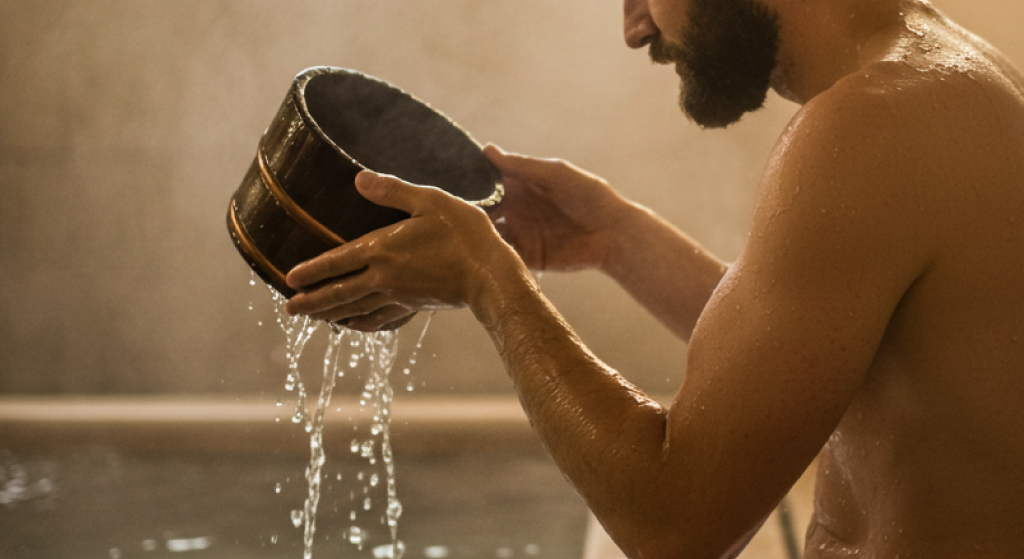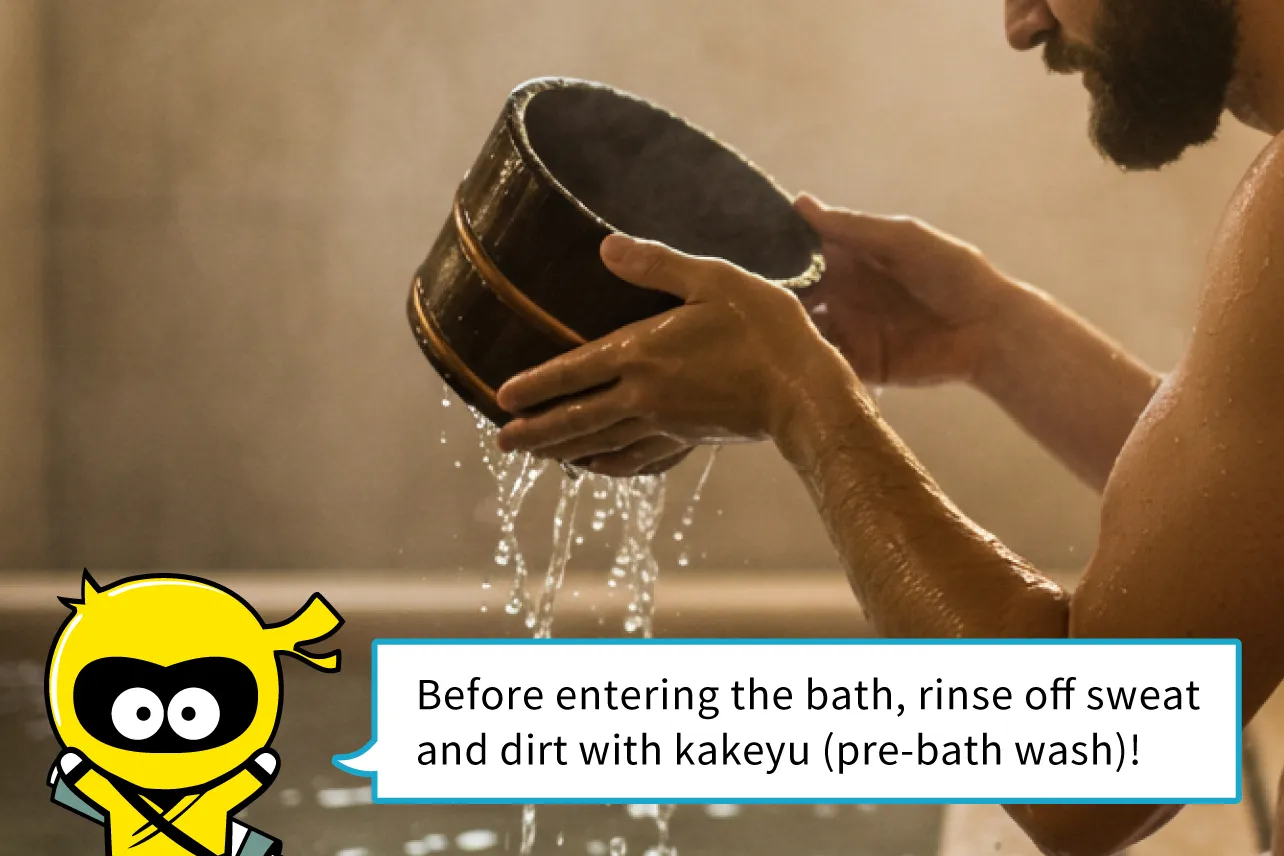

What Is Kakeyu? A Crucial Step Before Entering the Onsen


Kakeyu is the traditional Japanese practice of rinsing your body with warm water before entering an onsen bath. Unlike using a shower, kakeyu involves using a bucket or a stream of hot water usually found near the entrance of the bathing area. The goal is to cleanse sweat and dirt from your body to keep the communal bath water clean for everyone. In Japanese culture, performing kakeyu is not optional—it’s expected. This habit helps preserve hygiene and maintains the peaceful atmosphere of the onsen.
Why Is Kakeyu Important? Understanding Japanese Onsen Culture
Japanese onsens are more than just places to bathe—they’re cultural spaces meant for shared relaxation and reflection. Kakeyu is a sign of consideration and respect toward others. Entering the bath without rinsing first can introduce sweat and oils into the water, disrupting the clean environment. For Japanese people, the onsen is a tranquil, sacred space. Even if you’re unfamiliar with this custom, learning and practicing it shows respect for the culture and enhances your experience.
Where to Do It? Finding the Kakeyu Area
Kakeyu stations are usually located near the entrance to the bath or next to the tubs. Look for buckets, faucets, or pools at waist height. Some facilities may have signs labeled “Kakeyu” to guide you. In many cases, the kakeyu area is right beside the shower section. If you’re unsure, watch what the locals do or take a moment to walk around and find the proper place before you undress or enter the bath.
How Many Times? Recommended Kakeyu Steps
There are no strict rules for how many times to pour water during kakeyu, but following common courtesy is essential. Start by rinsing your feet and move upwards. It’s typical to pour water over your shoulders, arms, back, stomach, and legs at least five times. You don’t need to rinse your head, but if you’ve been sweating or using hair products, a light rinse is appreciated. Kakeyu is considered a minimum level of cleansing even if you plan to wash more thoroughly later.
Don’t Use the Bathwater! Proper Water for Kakeyu
Never use the water from the main bath for kakeyu—this is a major onsen faux pas. Bathwater is shared by all guests, and using it to rinse your body is unhygienic. Most facilities provide separate buckets or faucets specifically for kakeyu. Using the correct source of water not only shows respect but helps avoid offending others. Knowing this basic rule helps you enjoy your onsen visit with confidence.
What’s the Difference Between a Shower and Kakeyu?
You might wonder, “Isn’t a shower enough?” While showers are used to thoroughly clean your body while sitting down, kakeyu is a quick surface rinse done before that. In some onsens—especially outdoor ones or during busy times—people skip the shower and do only kakeyu. It’s a faster, more practical way to cleanse before soaking. Either way, doing kakeyu is a non-negotiable part of Japanese onsen etiquette.
What Happens If You Skip Kakeyu? A Common Cultural Misstep
Entering an onsen without performing kakeyu is considered rude and unhygienic in Japan. Even if you feel clean, failing to rinse beforehand can cause discomfort for others and deteriorate the water quality. Onsens are public spaces, and maintaining cleanliness is crucial. For foreign visitors, simply being unaware is not always an excuse. To avoid negative reactions or misunderstandings, always do kakeyu before soaking.
Family and Group Visits: Kakeyu Etiquette for Everyone
If you’re visiting an onsen with family or friends, make sure everyone—including children—follows the kakeyu routine. Parents should help young children rinse properly. Skipping kakeyu, even for kids, can be seen as disrespectful. Also, when in a group, avoid talking loudly or rushing through the process. Kakeyu is a personal ritual that contributes to the shared experience. Everyone in your group should be mindful and respectful of others.
You might be interested in this
Feeling Embarrassed? How to Stay Respectful While Doing Kakeyu
Many first-time visitors feel shy about being naked in public, but in Japan, nudity in onsens is normal, and no one is judging your body. You don’t need to worry about others watching you. What’s more important is performing kakeyu calmly and respectfully. Avoid splashing water or talking loudly. A composed and clean approach shows your understanding of Japanese onsen etiquette and will be appreciated by locals.
Common Mistakes and How to Avoid Them
Frequent mistakes made by foreign guests include not knowing about kakeyu, using bathwater to rinse, or relying solely on the shower. These can be considered breaches of etiquette. To avoid confusion, read signs carefully, observe how locals behave, or ask staff for guidance. Japan values cleanliness and respect in shared spaces, and following these customs will help you blend in and enjoy your visit fully.




